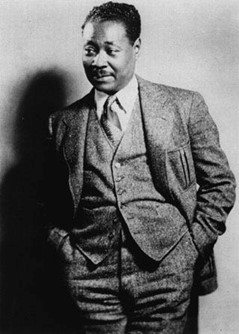
We are again approaching the end of another soca/dancehall carnival season. Every day now we are being bombarded from our television screens and newspapers with scenes from the carnival blowouts, bang-ins and interviews with people shamelessly trying to make a national hero of Byron Lee for his part in entrenching the imported bacchanalia fervour.
And, for the umpteenth time, those with a mind so to do will be able to watch the spectacle live, their children in tow, from the sidelines of the upcoming road march.
In the meantime, our children seeing it all cannot understand why their hypocritical seniors would want to deny them similar privileges in a public transport or a classroom.
We are relentlessly dangling sex in front of them at every turn and then wonder why it is the most sought after goal for so many of them. Who would have thought that the ecclesiastical fury which greeted the arrival of carnival two decades ago would have subsided so decidedly to allow for the peaceful coexistence with the Lenten season?
Are we not failing our children in our seeming inability to reinforce positive values and attitudes in them and in our willingness always to capitulate to the least common denominator in the evolution of our social norms? As if constantly in a state of moral hibernation we only come fully alive when some embarrassing occurrence stares us starkly in the face and forces a face-saving reaction on us.
Take the furore created in recent times over the cover of the then newly minted (2017) telephone directory. A dancehall scene, the Yellow Pages pictorial offended many (if not most) of us by confronting us with a vivid and sobering portrayal of what we had become. Those of us who remembered that we were not always like this rejected it, quite oblivious to the fact that the portrayal was merely a symptom of our new reality and not a cause of the increasing levels of sexual licentiousness invading our social space.
Indeed, the artist deserves to be commended for the restraint exercised in his interpretation of the dancehall phenomenon for I have seen much raunchier snippets of the real life scenes in TVJ’s Entertainment Report.
Even so, I am glad my children are now all grown up — no need to prepare to answer the question, “Mommy, is what dem doing in this picture?” in reference to the Yellow Pages cover story. Put to the test though, I would be ten times better able to do so for the Yellow Pages pictorial than for the front page picture of the Gleaner of April 16, 2007. On that page was the “roll it, gal” endorsed photo of a carnival participating couple (possibly total strangers) locked in a provocative “embrace”.
Dancehall lyrics have indeed been around for decades but the dance form now associated with the genre is of much more recent vintage. I recall when revellers used to move to Yellowman’s recording without resorting to the pelvic-thrusting, semi-nude encounter which dancehall has become. It was when people were dancing fully clothed, be it to reggae, ska, rock steady, dinkimini, mento or pocomania. It was a time when, accepting an invitation to dance, a young woman would face her partner rather than turn her back on him.
Then came carnival, and all hell broke loose. Carnival arrived here in the early 1990s at the invitation of some brown men of privilege from upper St Andrew. Though unequally yoked, the ribaldry of downtown dancehall lyrics fell hopelessly in love with uptown bacchanal, signalling the start of a flirtatious common-law relationship. The marriage was inevitable. Dancehall removed her clothing and the rest is history.
Bacchanal would eventually wind its merry way to the front page of a venerable newspaper and an emboldened dancehall would later stare us down in the mirror of a public reference book — the telephone directory.
The encounter with this reflection is indeed an eye-opening experience but hardly a part of our culture. Dancehall, like carnival, is a vulgar display of licentiousness — nothing that a simple Google search will not confirm. The spectacle of minimally attired young women playing contortionists in public spaces to better accommodate the erotic pummeling of fully attired male strangers is not a traditional response to our music or that of our ancestors and is something to be discouraged.
Of course, the “culture experts” at our leading universities — those on whose opinions mainstream media thrive — continue to insist that dancehall should be embraced as a part of our culture. They would have us believe that dancehall is merely “a playing up of the pelvic region”, a “secular version of traditional folk songs”.
Disrespectfully they would have us accept even, that any objection to the dance form so labelled is driven by dishonesty, a lack of knowledge of Jamaican culture or simply because one does not like to dance.
But what is Jamaican culture? Is it something to be defined by the traditional values of the society or is it the sum total of evolving and competing values? If one is to legitimize every sordid social activity in the name of culture, so long as it is repeated often enough or has been around long enough, then where does that put murder or scamming or corruption in our scheme of things? And how far back do we go? Should we not then include slavery and prostitution as part of the mix? And if we chose so to do, would that then make them acceptable? Clearly there has to be a line where culture stops and dysfunctional behaviour is seen for what it is.
Dancehall, as currently practised, is neither dance nor culture. If we are honest we will admit that it is not espousing the values we want our children to embrace, even if the current crop of practitioners happen not to be our own young female relatives. Our highly placed dancehall apologists are ever too ready to jump to the defence of the murderous lyrics and actions of their dancehall heroes. They should reflect on the effect of this dancehall intrusion on the psyche of our children and publicly repent in the national interest. Paul Stastny Womens Jersey




Interesting first article for me . However, living in England and growing up with the infamous “Page 3” where every morning once past the front page head a pair of breast and a pretty smile would greet the whole country every day of the week. Not to mention the barely their panties etched onto these shapely bodies. Inevitably, today many a young girls dream is to strip for her glory and bare as much as the camera or eyes can take for the sake of money.
My point is, is isn’t so much the vulgarity one might find with the antics of carnival, but the lack of economic responsibility that has beset Jamaica for possibly over 60 years which is perhaps why the value system is out of control. In the UK you are free to wear as little as possible bearing in mind there are jobs, careers, “things to do” economically to keep your mind active so you are not compelled to compete solely in the world of the flesh.
If writers truly care to look beyond the visual vulgarity I am sure a glimpse into the minds of the majority of these individuals will show what the crippling effect of an inept education system, a barbaric private interest economy which at some point will cultivate such a lack self value and self responsibility.